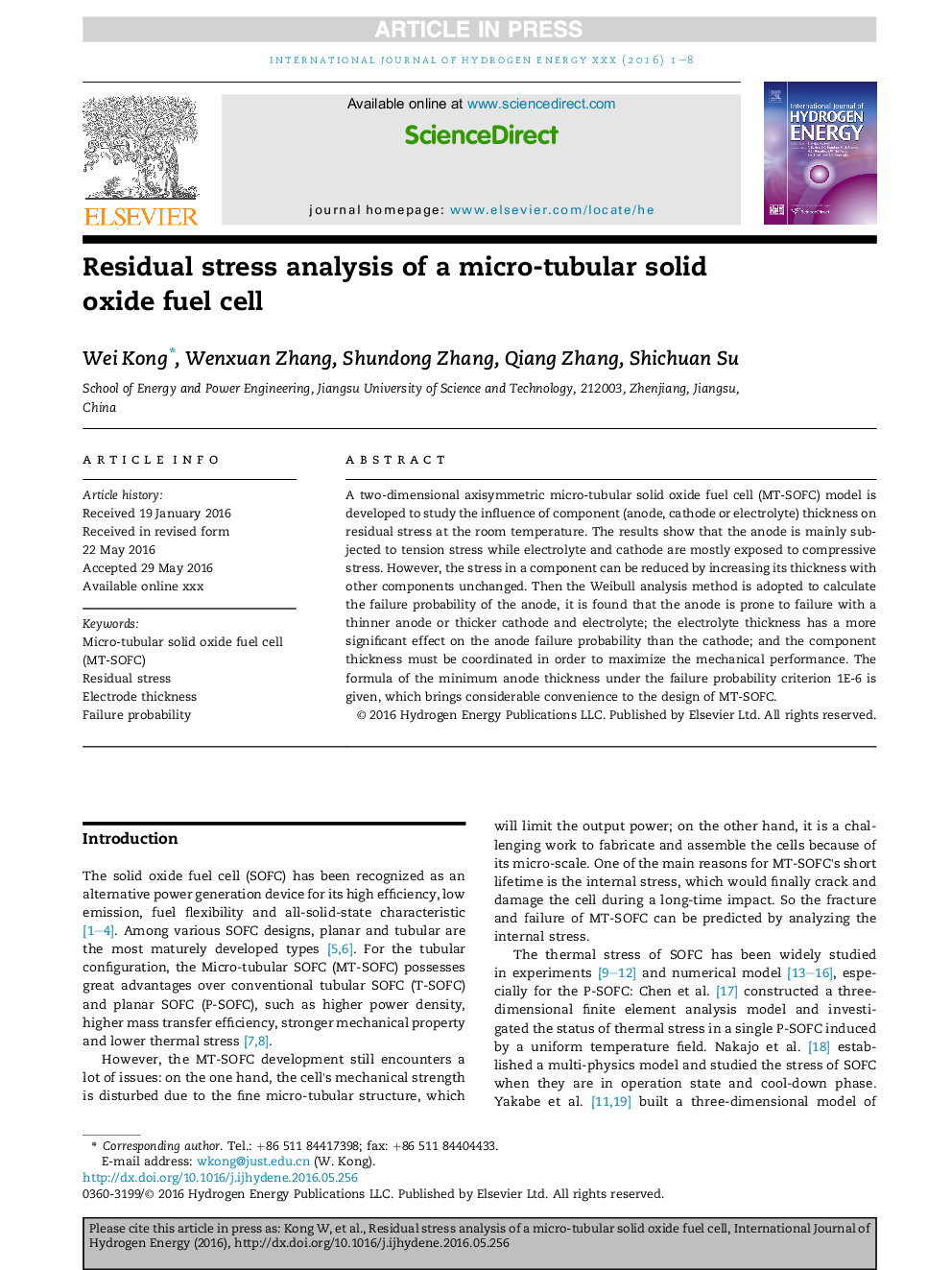| Article ID | Journal | Published Year | Pages | File Type |
|---|---|---|---|---|
| 5147890 | International Journal of Hydrogen Energy | 2016 | 8 Pages |
Abstract
A two-dimensional axisymmetric micro-tubular solid oxide fuel cell (MT-SOFC) model is developed to study the influence of component (anode, cathode or electrolyte) thickness on residual stress at the room temperature. The results show that the anode is mainly subjected to tension stress while electrolyte and cathode are mostly exposed to compressive stress. However, the stress in a component can be reduced by increasing its thickness with other components unchanged. Then the Weibull analysis method is adopted to calculate the failure probability of the anode, it is found that the anode is prone to failure with a thinner anode or thicker cathode and electrolyte; the electrolyte thickness has a more significant effect on the anode failure probability than the cathode; and the component thickness must be coordinated in order to maximize the mechanical performance. The formula of the minimum anode thickness under the failure probability criterion 1E-6 is given, which brings considerable convenience to the design of MT-SOFC.
Related Topics
Physical Sciences and Engineering
Chemistry
Electrochemistry
Authors
Wei Kong, Wenxuan Zhang, Shundong Zhang, Qiang Zhang, Shichuan Su,
